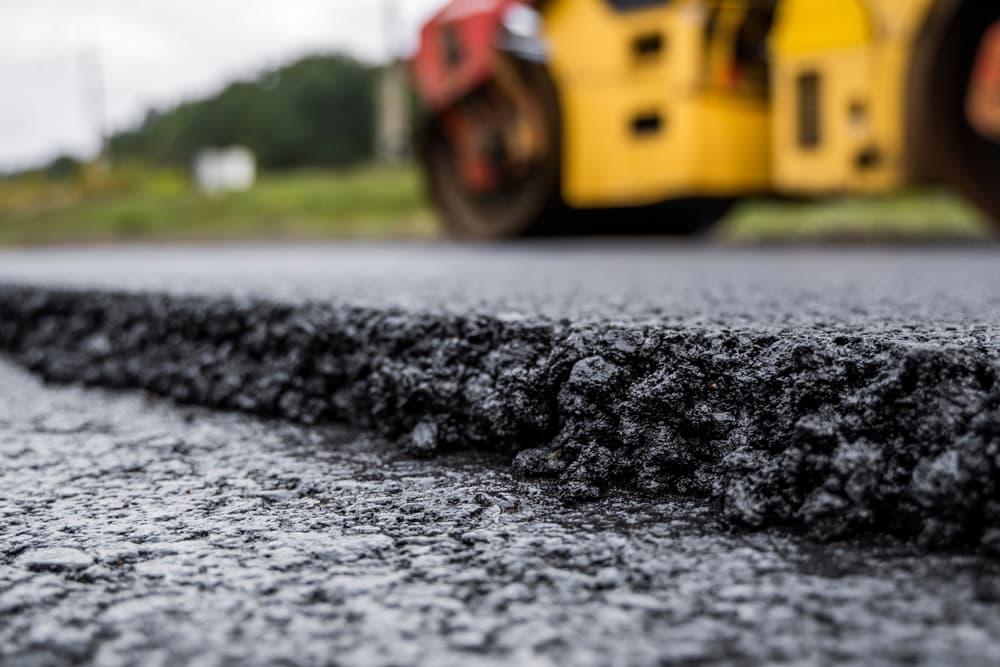The Facts About A1 Professional Asphalt & Sealing Llc Uncovered
The Facts About A1 Professional Asphalt & Sealing Llc Uncovered
Blog Article
The Of A1 Professional Asphalt & Sealing Llc
Table of ContentsThe Buzz on A1 Professional Asphalt & Sealing LlcWhat Does A1 Professional Asphalt & Sealing Llc Mean?A1 Professional Asphalt & Sealing Llc for DummiesThe Best Strategy To Use For A1 Professional Asphalt & Sealing LlcThe smart Trick of A1 Professional Asphalt & Sealing Llc That Nobody is Discussing

The oil in a car engine is not just oil. It consists of a range of ingredients to improve the vehicle's efficiency. These consist of polymers, thickness modifiers, warmth stabilizers, added lubes, and wear additives. The REOB consists of all the ingredients that were in the waste oil in addition to the wear metals from the engine (generally iron and copper).
Nonetheless, by making lots of blends using various REOB samples and various asphalt binders, the variations largely can be averaged out. Numerous States offered samples of known REOB composition to TFHRC scientists, who examined the samples to compare the portion of added (known) REOB to the located (evaluated) amount. The evaluations showed an equivalent percent of included and discovered REOB.
The smart Trick of A1 Professional Asphalt & Sealing Llc That Nobody is Discussing
None of those States understood that the asphalt they were purchasing consisted of REOB. One State insisted its samples had no REOB - https://alasphaltseal.wixsite.com/a1asphaltseal/post/a1-professional-asphalt-repairs-enhancing-roads-with-excellence.
Of the 1,532 samples checked, 12 percent consisted of REOB, and some contained appreciably high degrees of it at 1020 percent. The highest degree was 34 percent in a sample from Texas, which TxDOT had actually used in a patching compound. This testing likewise revealed the presence of phosphoric acid in 11 percent of the examples, and 2 percent had ground tire rubber.
Two years back at TRB's annual conference, the Federal researchers held an REOB workshop and offered the findings of their laboratory analyses to a standing room-only crowd. Some firms do not particularly prohibit REOB, they do enforce physical examinations that avert its useeffectively a ban. Others do not outlaw it by specification, however have arrangements with asphalt providers to avoid the usage of REOB
About A1 Professional Asphalt & Sealing Llc
A handful do allow REOB, some within certain restrictions. Ohio and Texas restriction levels to less than 5 percent of the asphalt. To create a trustworthy examination method that all States can utilize, the TFHRC scientists established a round-robin examination strategy. The individuals are 11 State highway firms (Illinois, Massachusetts, Minnesota, Mississippi, Montana, North Carolina, Oklahoma, South Carolina, Texas, Vermont, and Wyoming), 2 independent screening laboratories, the Ministry of Transportation in Ontario, Queen's University in Ontario, and an Ontario paving contractor.
In total, the researchers prepared and delivered 720 blends. The participants are evaluating the examples independently making use of the guidelines given by the TFHRC scientists. The round-robin testing is nearly completed, and TFHRC is in the process of gathering the outcomes. The outcome will be a recommended AASHTO test technique that any State can embrace and utilize (asphalt sealcoating in st louis).
The sidewalk with REOB, which is located 0.6 mile (1 kilometer) from the pavement without REOB, has identical subgrade, traffic density, and climate. However, the segment of Highway655 with 5 to 10 percent REOB revealed significant cracking. In this instance, the presence of REOB was the recognized root cause of splitting at a low temperature levels.
"In our experience in copyright, even tiny amounts of 23 percent can be a problem." In a similar way, a section of test sidewalk in Minnesota (MN1-4) found to include REOB additionally fractured too soon. The pavement carried out well for the initial 3 to 4 years, but then began to break. This sidewalk is likewise subject to reduced temperatures.
A1 Professional Asphalt & Sealing Llc Things To Know Before You Get This
The examinations were not substantial, however they revealed that at degrees of 6 percent or more, the tensile strength of the asphalt dropped dramatically. At a degree of 3.5 percent REOB, the variation in the physical examination approaches was above the result of REOB. Actually, it was difficult for researchers to examine whether REOB was existing.

One binder specification thought about is the distinction between the reduced temperature crucial requirements temperature level for stiffness (S) in the flexing beam rheometer and the bending beam of light rheometer creep incline (m-value) kept in mind as Tcritical. TC = TC (S) TC (m-value). Analysis of this parameter is still ongoing. 2 independent research groups, one from AASHTO and the other from the Asphalt Institute, ended that more study is needed on making use of REOB in asphalt.
Previously, all asphalt screening determined design properties such as stiffness. These examinations do not show what materials had actually been included to the asphalt.

Some Known Facts About A1 Professional Asphalt & Sealing Llc.
These outcomes demonstrate there are weak points in the standardized design testing protocols that might be exploited. The manufacturer may have an economic benefit and the product passes all the standard examinations, however the item might not be valuable to guaranteeing long-term performance. To address this problem and the growth of new asphalt additives and extenders, TFHRC is beginning a research study program to use handheld spectroscopic gadgets, x-ray fluorescence spectroscopy, and Fourier change infrared spectroscopy to make it possible for analyses to be carried out in the field instead of needing to take samples back to the laboratory.
Report this page